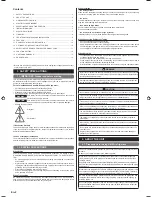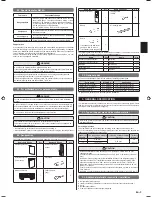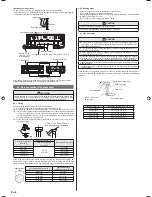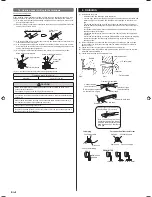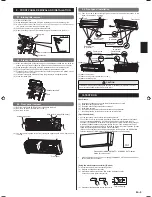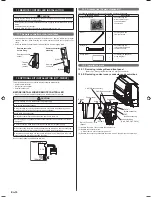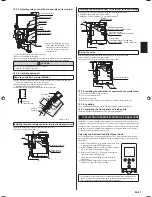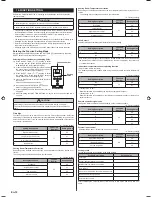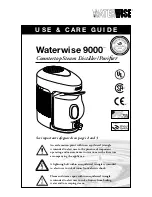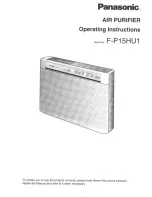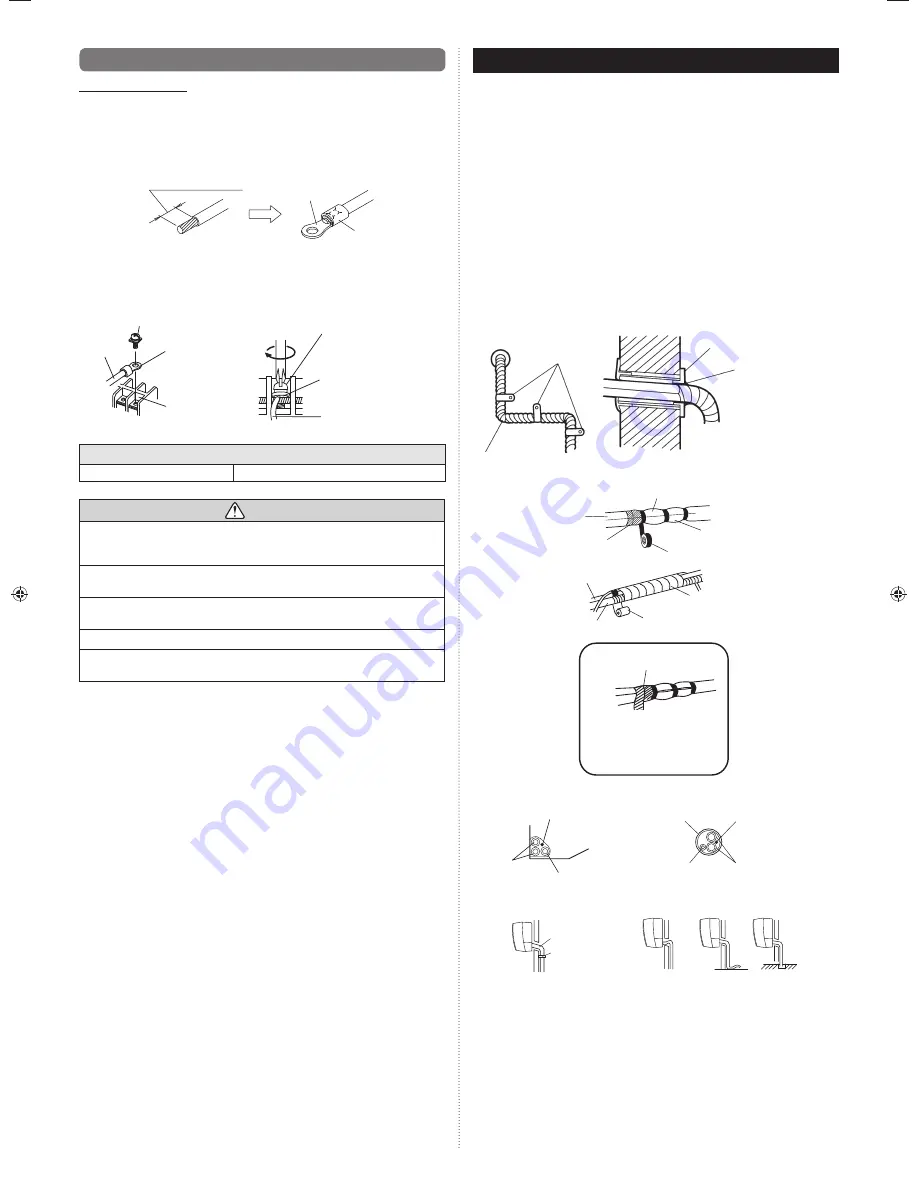
En-8
8. FINISHING
(1) Insulate between pipes.
• Insulate suction and discharge pipes separately.
• For rear, right, and bottom piping, overlap the connection pipe heat insulation and
indoor unit pipe heat insulation and bind them with vinyl tape so that there is no
gap.
• For left and left rear piping, butt the connection pipe heat insulation and indoor
unit pipe heat insulation together and bind them with and vinyl tape so that there
is no gap.
• For left and left rear piping, wrap the area which accommodates the rear piping
housing section with cloth tape.
• For left and left rear piping, bind the connection cable to the top of the pipe with
vinyl tape.
• For left and left rear piping, bundle the piping and drain hose together by wrapping
them with cloth tape over the range within which they
fi
t into the rear piping
housing section.
(2) Temporarily fasten the connection cable along the connection pipe with vinyl tape.
(Wrap to about 1/3 the width of the tape from the bottom of the pipe so that water
does not enter.)
(3) Fasten the connection pipe to the outside wall with a saddle, etc.
(4) Fill the gap between the outside wall pipe hole and the pipe with sealer so that rain
water and wind cannot blow in.
(5) Fasten the drain hose to the outside wall, etc.
Pipe
Saddle*
Outside wall cap*
Sealer putty*
(Outdoors)
*Field supplied
Wall
Seal A is used when the diameter of gas
pipe is Ø12.70 mm (1/2 in.) or more.
Butt connection pipe (heat
insulation) against the indoor
unit pipe (heat insulation) and
wrap with seal A so that there
is no gap.
Overlap the insulation
Vinyl tape
Wrap with cloth tape
Cloth tape
Drain hose
Connection cable
Pipe
Drain hose
Check the following:
GOOD
Drain hose
Saddle
Lifted up
Wave
End in water
Drain hose
Connection pipe
Wall pipe
Connection cable
Left piping
For connection from the left rear
PROHIBITED
Pipe
Connection pipe
(heat insulation)
Bind the pipes together
so that there is no gap.
Indoor unit pipe
(heat insulation)
7.4. How to connect wiring to the terminals
Caution when wiring cable
When stripping off the insulation of a lead wire, always use a special tool such as a wire
stripper. If there is no special tool available, carefully strip the insulation with a knife etc.
(1) Use crimp-type terminals with insulating sleeves as shown in the
fi
gure below to con-
nect to the terminal block.
(2) Securely clamp the crimp-type terminals to the wires using an appropriate tool so that
the wires do not come loose.
Strip : 10 mm (13/32 in.)
Crimp-type
terminal
Sleeve
(3) Use the speci
fi
ed wires, connect them securely, and fasten them so that there is no
stress placed on the terminals.
(4) Use an appropriate screwdriver to tighten the terminal screws. Do not use a screw-
driver that is too small, otherwise, the screw heads may be damaged and prevent the
screws from being properly tightened.
(5) Do not tighten the terminal screws too much, otherwise, the screws may break.
Screw with special washer
Wire
Crimp-type terminal
Terminal blocks
Wire
Screw with special washer
Crimp-type
terminal
(6) See the table below for the terminal screw tightening torques.
Tightening torque [N·m (lbf·in)]
M4 screw
1.2 to 1.8 (11 to 16)
CAUTION
Match the terminal block numbers and connection cable colors with those of the
outdoor unit or branch box.
Erroneous wiring may cause burning of the electric parts.
Connect the connection cables
fi
rmly to the terminal block. Imperfect installation may
cause a
fi
re.
Always fasten the outside covering of the connection cable with the cable clamp. (If
the insulator is chafed, electric discharge may occur.)
Always connect the earth (ground) wire.
Do not use the earth (ground) screw of the indoor unit for the connection other than a
speci
fi
ed outdoor unit or branch box.
9319357041_IM.indb 8
9319357041_IM.indb 8
11/30/2011 1:32:50 PM
11/30/2011 1:32:50 PM
Summary of Contents for 9319357041
Page 14: ......


